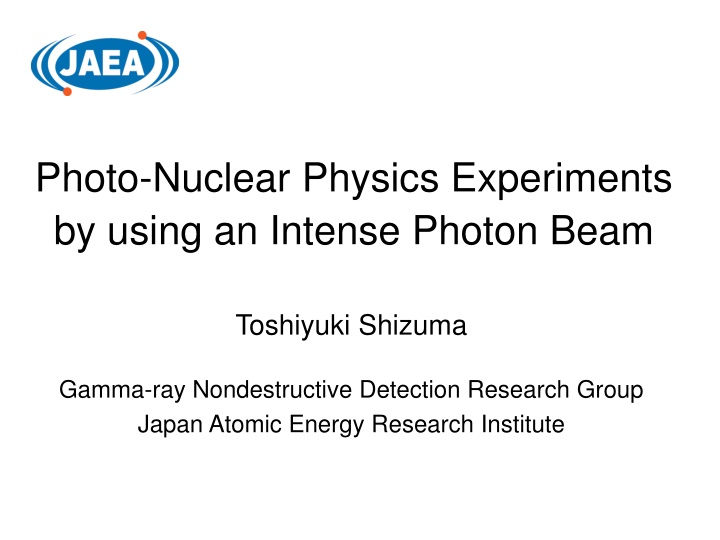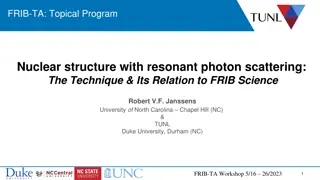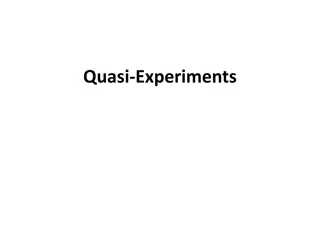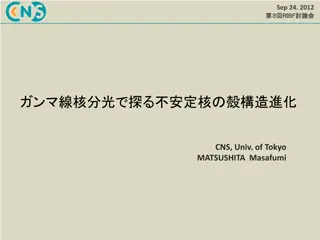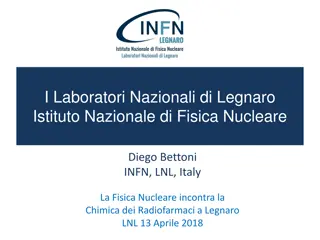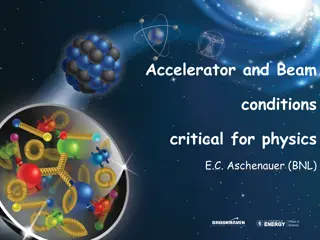Advanced Photon-Beam Experiments in Nuclear Physics Research
Explore cutting-edge experiments in nuclear physics using intense photon beams, nondestructive isotope detection, laser Compton scattering rays, and photon beams for fundamental collective motion studies. Learn about nuclear resonance fluorescence, dipole excitation strength distribution, and detailed level structures observed in photon beam measurements. Discover how these advanced techniques provide insights into nuclear physics phenomena at a fundamental level.
Download Presentation

Please find below an Image/Link to download the presentation.
The content on the website is provided AS IS for your information and personal use only. It may not be sold, licensed, or shared on other websites without obtaining consent from the author.If you encounter any issues during the download, it is possible that the publisher has removed the file from their server.
You are allowed to download the files provided on this website for personal or commercial use, subject to the condition that they are used lawfully. All files are the property of their respective owners.
The content on the website is provided AS IS for your information and personal use only. It may not be sold, licensed, or shared on other websites without obtaining consent from the author.
E N D
Presentation Transcript
Photo-Nuclear Physics Experiments by using an Intense Photon Beam Toshiyuki Shizuma Gamma-ray Nondestructive Detection Research Group Japan Atomic Energy Research Institute
Nondestructive Isotope Detection Nuclear resonance fluorescence (NRF) Fingerprint of isotopes W A N T E D High energy rays are used; High penetrability Applicable for identification of materials such as specific nuclear materials, explosives, etc. shielded by heavy metals R.Hajima, et al., J. Nucl. Sci. Tech. 45, 441 (2008).
Laser Compton Scattering Rays LCS rays can be generated by scattering of high energy electrons with laser light. M1 Laser light Electron E1 LCS ray Highly monochromatic Highly polarized (linearly/circularly) Energy variable Small divergent Vertical polarization: =90 E1: Horizontally scattered M1: Vertically scattered
Physics with LCS Photon Beams Nuclear physics Fundamental collective motions via E1 and M1 excitation Pygmy dipole resonance, spin-flip M1, scissors mode, etc PNC observation with circularly polarized photons A. I. Titov and M. Fujiwara, J. Phys. G 32, 1097 (2006) Long-standing question in nuclear physics Interference between weak-bosons and nucleons Nuclear astrophysics Nucelosynthesis ( process and process) ( ) B GT Inelastic neutrino scattering cross sections 0 Reliable nuclear model, e.g, shell model predicting M1 response K. Langanke et al., PRL 20501 (2004)
Strength Distribution of Dipole Excitation GDR NRF Strength ( , ') ( ,n) p n Eth 8MeV GDR n PDR p M1 PDR Sc M1 En 0 E p n p 15MeV n GDR: Electric giant dipole resonance Sc PDR: Electric pygmy dipole resonance M1: Magnetic spin-flip dipole mode Sc: Magnetic dipole scissors mode (orbital part) p n
NRF Measurements with LCS Photon Beam Obtained by using LCS rays at AIST, Tsukuba, Japan + 0 . 85 for M transiton 1 = Asym . M1 parallel Parallel = 0 0 . 85 for E transition 1 400 M1 transitions 200 M1 Counts / 2 keV 0 E1 perpendicular Perpendicular = 90 1000 E1 500 0 6500 6.5 7000 Energy (keV) 7500 7.5 7.0 (MeV) T. Shizuma et al., Phys. Rev. C 78 061303(R) (2008) Clear difference observed between different polarization setups Unambiguous determination of multipole orders (E1/M1) Observation of the detailed level structure below Enin 208Pb --- Tensor force
Measurements above Neutron Emission Energy Neutron time-of-flight (TOF) method Duration between pulses and neutron signals p-wave p-wave p-wave Neutron emission 3+ 3+ 3+ 314 314 314 0 -,1- 0 -,1- 0 -,1- 3/2 -,5/2-,7/2- 3/2 -,5/2-,7/2- 3/2 -,5/2-,7/2- 197 197 197 11/2+ 11/2+ 11/2+ 4- 4- 4- 174 174 174 s-wave s-wave s-wave s-wave s-wave s-wave n 99 99 99 3- 3- 3- 3/2- 3/2- 3/2- 1- 1- 1- 185W 185W 185W 186Re 186Re 186Re Neutron Sn=7395keV Sn=7395keV Sn=7395keV Sn=7194keV Sn=7194keV Sn=7194keV E1 E1 E1 E1 E1 E1 Neutron 0+ 0+ 0+ 5/2+ 5/2+ 5/2+ 186W 186W 186W 187Re 187Re 187Re
Neutron TOF Spectrum Obtained by using LCS rays at NewSUBARU 105 104 Counts per Channel 103 Structures are observed 102 101 Neutrons Neutrons 100 2600 2700 2800 2900 Energy Time Neutron energy LCS
Polarization Effects Neutron K. Horikawa et al., JPS meeting, Sep. 2010
Summary Small E/E (10-6 10-4): Selective excitation of levels Short pulse duration: High resolution measurements High intensity : Increased flight distance High resolution measurements Rare isotope measurements Less amount of target materials The information on the states above the neutron emission energy can be optained through the neutron TOF measurement. - Dipole strength distribution, parity, excitation energy etc.
TOF Energy Resolution 1 0.9 0.8 0.7 0.6 E/E (%) 0.5 0.4 0.3 0.2 0.1 0 0 0.2 0.4 0.6 0.8 1 1.2 En(MeV) Assuming detector time resolution = 1 ns and distance = 3m
Estimation Scattering cross section 2 + J c 2 1 = E Is 0 + J 2 1 0 Is=1.2x10-22cm2eV for E =10 MeV and 0=1eV Production yield Y = I N t Y=3.4x105/sec for I=106/sec/eV and Nt=1g/cm2 Counting rate R = NY R 60 cps for 10-5(3m, 1%) and N=20
